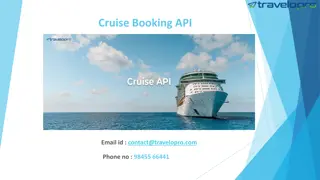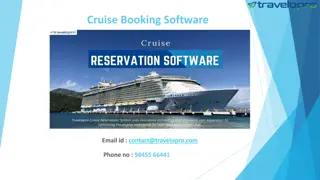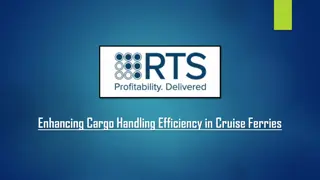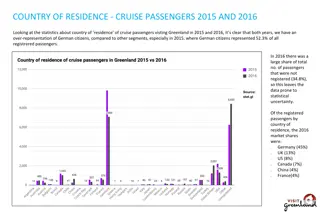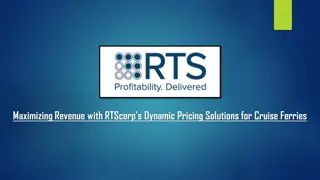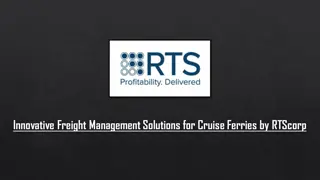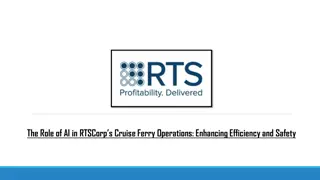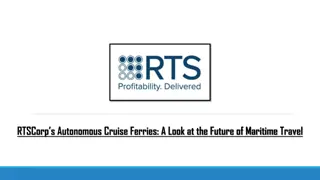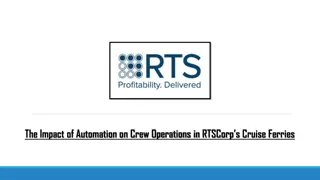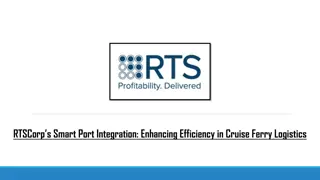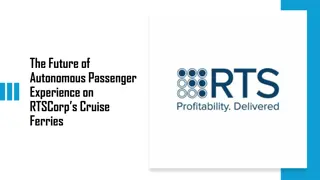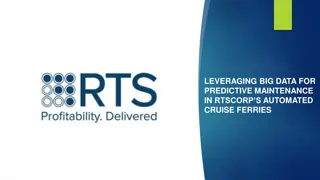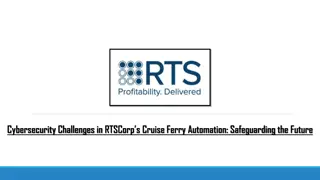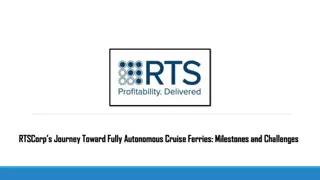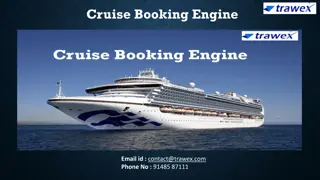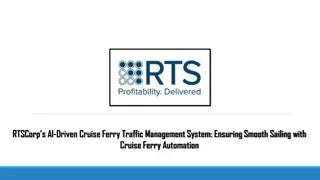Autonomous Emergency Response Systems How RTSCorp is Enhancing Safety in Cruise Ferries
In the maritime industry, safety is paramount, especially when it comes to large vessels like cruise ferries that transport thousands of passengers across vast bodies of water. One key advancement in enhancing onboard safety is the integration of aut
Download Presentation

Please find below an Image/Link to download the presentation.
The content on the website is provided AS IS for your information and personal use only. It may not be sold, licensed, or shared on other websites without obtaining consent from the author. Download presentation by click this link. If you encounter any issues during the download, it is possible that the publisher has removed the file from their server.
E N D
Presentation Transcript
Autonomous Emergency Response Systems: How RTSCorp is Enhancing Safety in Cruise Ferries
In the maritime industry, safety is paramount, especially when it comes to large vessels like cruise ferries that transport thousands of passengers across vast bodies of water. One key advancement in enhancing onboard safety is the integration of autonomous emergency response systems. RTSCorp, a leader in maritime technology, has been at the forefront of this innovation, offering groundbreaking solutions that improve crisis management and ensure passenger safety. This shift is part of a broader movement toward Cruise Ferry Automation, reshaping the future of sea travel.
The Importance of Cruise Ferry Automation Cruise ferries are complex vessels, combining the operational needs of a ferry with the luxury and comfort of a cruise ship. This dual nature means they face a unique set of challenges when it comes to safety, navigation, and emergency preparedness. Automation technologies are transforming these vessels, making them smarter and more efficient. Autonomous systems reduce human error, streamline operations, and enhance the ability to respond swiftly to emergencies. RTSCorp's focus on Cruise Ferry Automation aims to leverage these technologies to ensure the highest safety standards are met. The Role of Autonomous Emergency Response Systems Emergencies at sea can range from mechanical failures to extreme weather conditions and onboard fires. Traditionally, handling these situations relied heavily on crew training and experience, which, while essential, can sometimes be limited by human factors such as fatigue, stress, and decision-making delays. This is where RTSCorp's autonomous emergency response systems come into play. These systems use a network of sensors, AI-driven algorithms, and real-time data to detect potential issues long before they escalate. For instance, if a fire breaks out in a remote area of the ship, the system can immediately detect smoke or heat changes, alert the crew, and activate fire suppression measures. Simultaneously, it provides real-time guidance to passengers through digital displays and alarms, ensuring a safe and efficient evacuation process if necessary. This level of automation minimizes response time and maximizes the chances of containing an emergency, potentially saving lives.
Enhancing Real-Time Decision-Making One of the most significant benefits of Cruise Ferry Automation in emergency response is the enhancement of decision- making. RTSCorp s systems integrate advanced machine learning models that can analyze vast amounts of data and recommend the best course of action in an instant. During an emergency, this ability to process information faster than any human could is crucial. The system can evaluate the ship's current condition, weather patterns, and passenger locations, then relay critical information to the crew for informed decisions. In addition, autonomous systems can execute predefined protocols in situations where immediate action is necessary, even if human intervention is delayed. This means, for example, that a hull breach would trigger instant responses like sealing off affected compartments and activating bilge pumps without waiting for manual commands. RTSCorp's Commitment to Safety RTSCorp's dedication to enhancing safety through autonomous systems reflects its deep understanding of the complexities involved in maritime travel. Their innovative approach to Cruise Ferry Automation goes beyond improving day-to-day operations; it fundamentally changes how emergencies are managed, offering a safer experience for passengers and crew alike.
Conclusion As the maritime industry continues to evolve, the integration of autonomous systems in cruise ferries is not just a luxury it is a necessity. RTSCorp s leadership in Cruise Ferry Automation, particularly in emergency response systems, is paving the way for a safer future at sea. By harnessing the power of automation, real- time data processing, and AI-driven decision-making, RTSCorp is ensuring that cruise ferries can navigate any crisis with precision and efficiency.
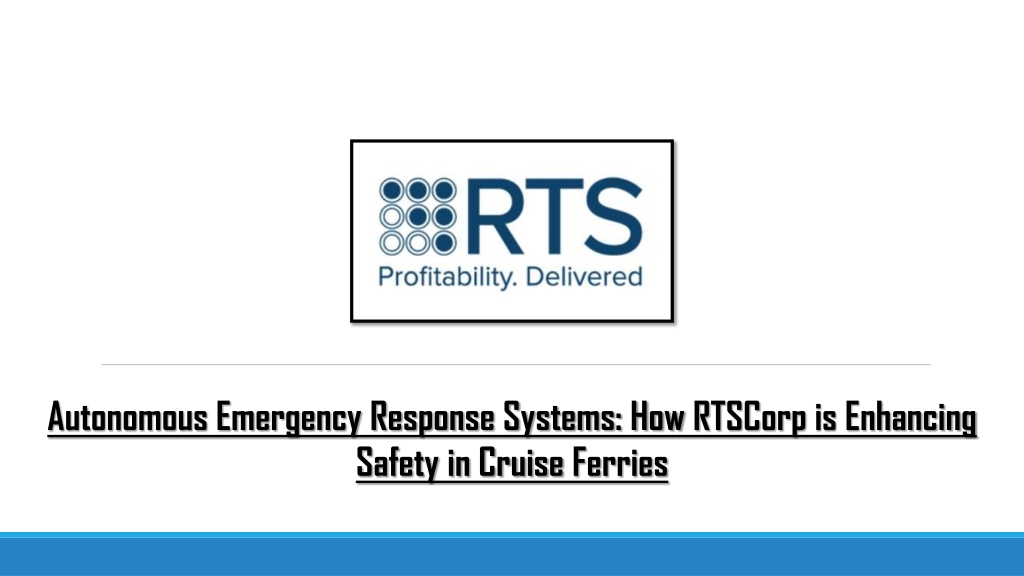
 undefined
undefined



 undefined
undefined



